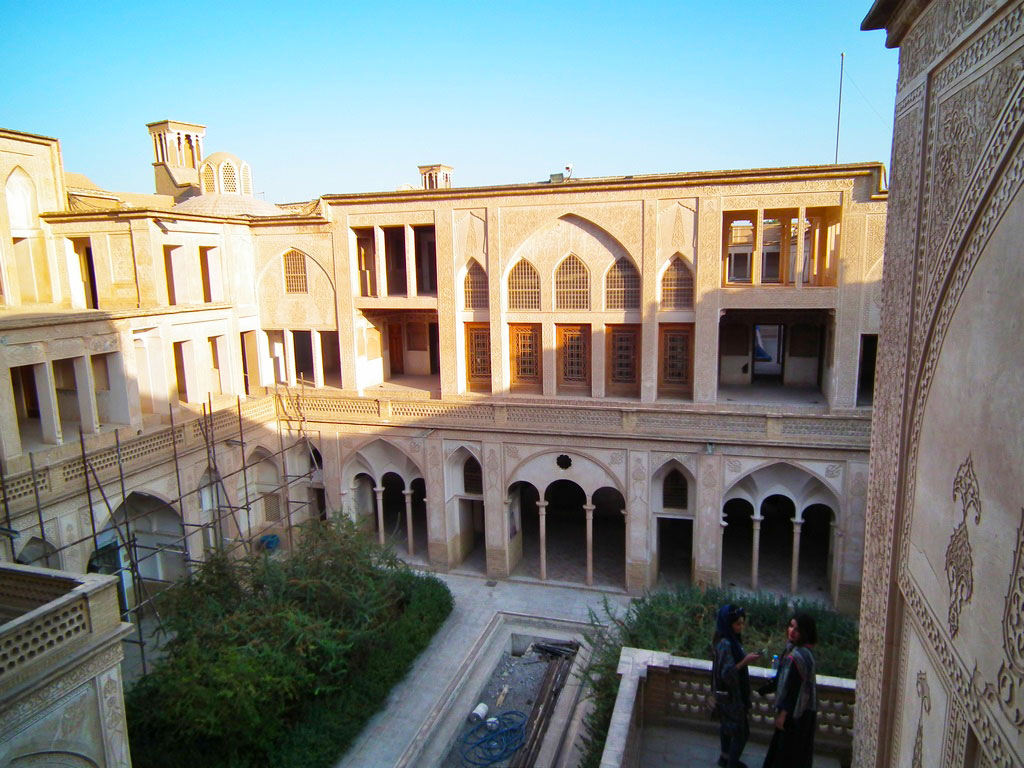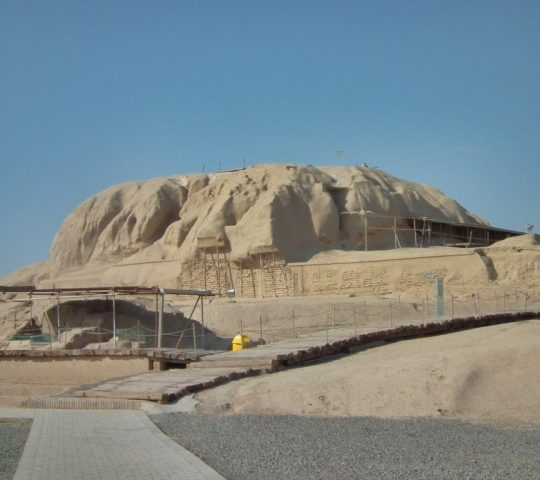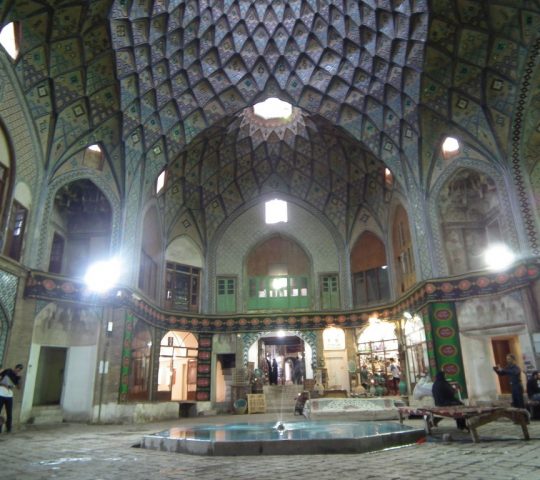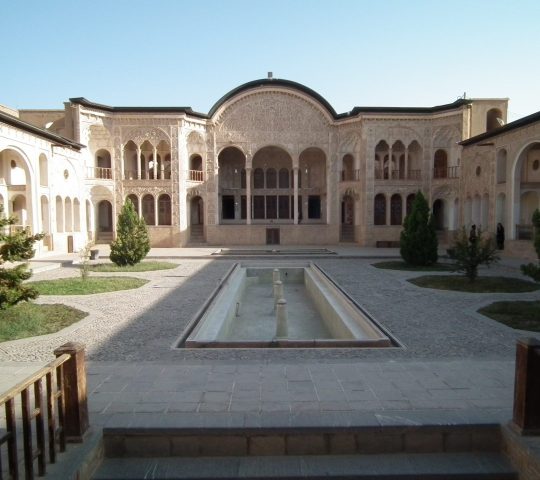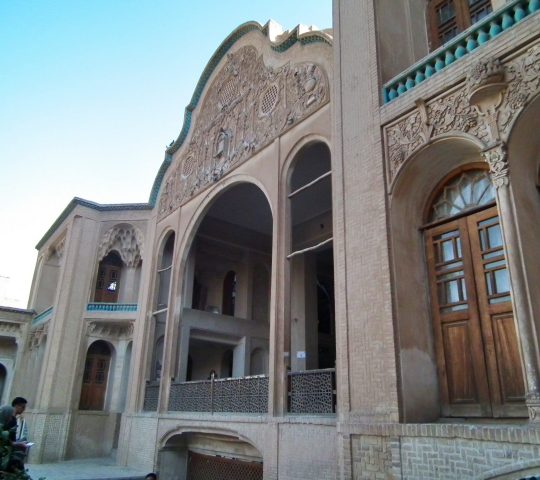It seems that I will use fewer words to describe its beauty and a world of words still can not describe the beauty of Kashan. The Abbasian House, which Haj Mohammad Ibrahim (tile and crystal merchant) and its architect whose name we do not know, spent two decades together to build such a five-story, five-yard building. The construction of this building was completed in 1829.
This house with 5000 square meters and infrastructure of 7000 square meters in the past years had only one owner who after his death as if the Abbasian House did not like this world and tore it to pieces. Its yards were separated and turned into 5 small houses.
After the builder of Abbasian House passed away, as we said, the mansion was divided among his children. Around 1920, the main part of the previous building, which is now known as the Abbasian House, was purchased by a prominent Kashan merchant named Mr. Abbasian.
Since the amount of money that Mr. Abbasian spent to buy this house was a lot at that time, this transaction became very popular among the people and it has been called the Abbasian House ever since.
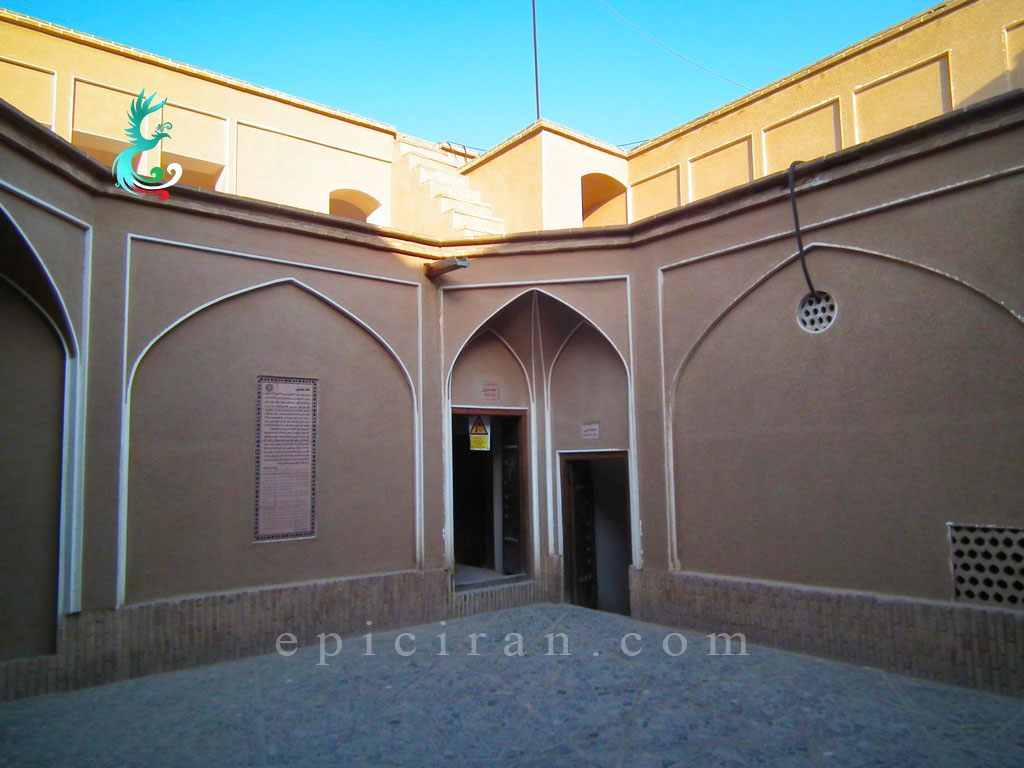
The architecture of the Abbasian House
Many consider the Abbasian House to be the most beautiful historical house in Kashan. This historical house is very similar to the Tabatabaei House in terms of architecture. Since the house is built in the pattern of a Sunken Courtyard and is located below the height of the alley, a sloping path has been built at the entrance so that they will have no problem entering the house.
Kashan Abbasian House, but its architecture is not a little different from the architecture of other parts of Iran, from the ground to the sky. The architectural style of this Abbasian House was one of the styles you have never heard of, “Sunken Courtyard”. The philosophy of the white face of the building was also because the heat of the sun does not increase more than this and reduces the heat.
Different parts of the Abbasian house
Leaving aside the exterior and the courtyard and the pool of the Abbasian House, there is a room in the outer courtyard of the Abbasian House in Kashan, and each of them has its own world; Nested rooms, royal room, prayer room, kitchen, cellar, water well, laundry room, central room, mirror room, spring porch, secret room, shrine, and crew yard.
Central room
The center of the rooms and the interior and exterior of the room is the central room with its sash doors and latticed windows and colorful glass.
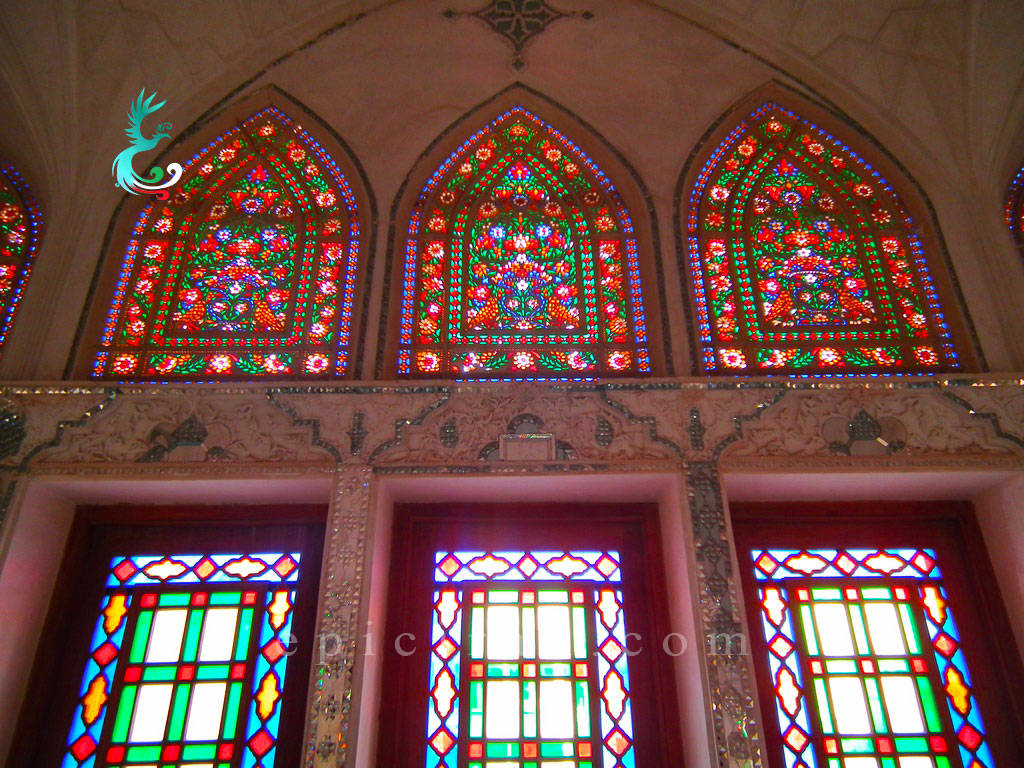
Mirror room
The most magnificent and charming room of the Abbasian House is the mirror room, with its colorful bedspreads, mirrors, doors, and windows, which is not unlike the bride’s room, which is also known by this name. The characteristic of the mirror room, apart from its good looks, is that the black and sometimes dark blue ceiling of that area of Kashan was seen as a star, that is, when the light of the lamp hits the glass prisms of this room, its reflection with those silk threads descends to the ceiling. And the desert sky was simulated on its roof.
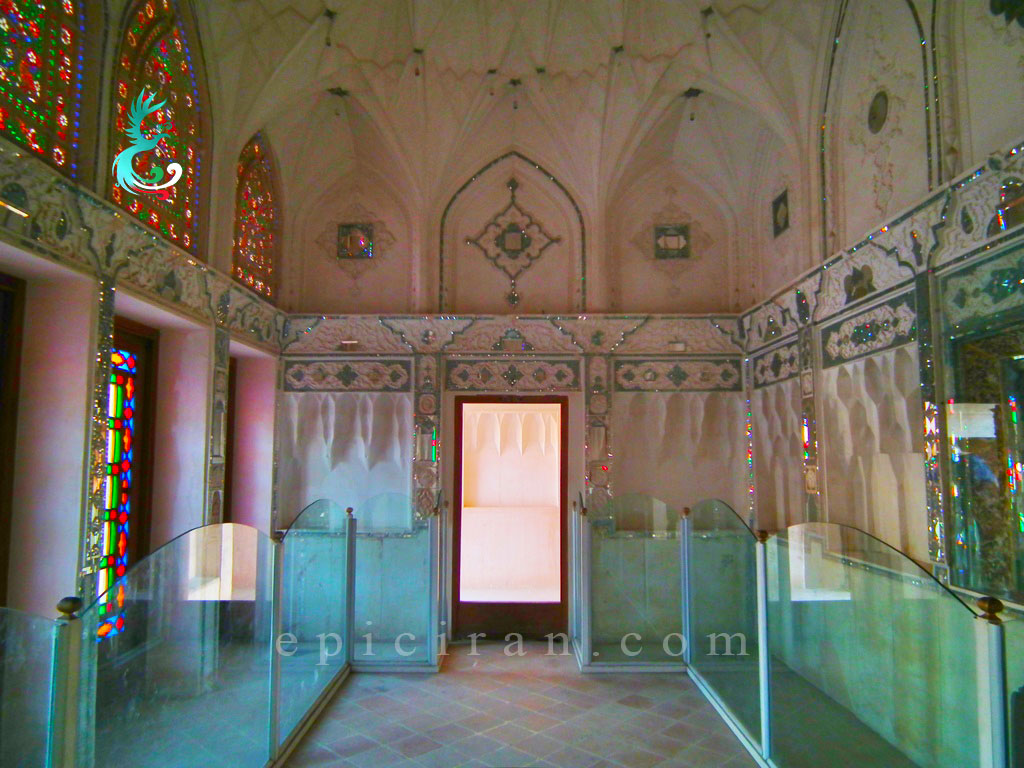
Two small and large indoor spaces
The first floor was for men and the second floor was for women, who gathered for religious services and people. Its windcatchers also changed the atmosphere of the large indoor space during the bustle of the ceremony.
The royal room
The royal room with its spectacular mirrors upstairs is one of those spectacular wonders. The interesting thing about the royal room is the fireplace; Its fireplace is decorated with gold and beautiful colors.
Secret room
In one of the upper rooms of the Abbasian House, which we do not know exactly where, there is a secret door that leads to the secret room, where valuable and antique items must be kept. But as soon as these precious objects are placed on the top floor of one of the rooms, instead of being buried in the basement or on the ground floor, it brings the architect’s intelligence.
Worship
The place of worship of the Abbasian House, decorated with Quranic verses and rituals, whose inhabitants could at any time, apart from the mosque, enjoy the mystical atmosphere and relax.
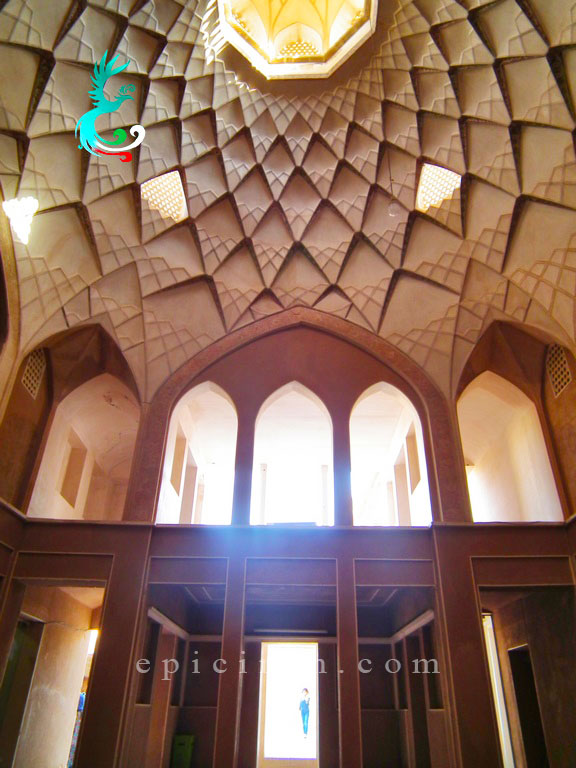
Laundry
In this part of the house architecture, which is obviously called for washing dirty clothes, the water of the pond and the inlet and outlet channels flow in this part and the clothes were washed with it.
Water wells and Qanats
Its inhabitants do not forget the water well next to the aqueduct and use two deep wells of this building, one to store water and the other to irrigate gardens and orchards.
Great Cellar
Several ponds and cellars or summer halls have been built in the heart of this house, which on the hottest days of summer sit on the arctic entry and in a semi-open space next to the middle pond to be safe from the summer heat.
Yard and kitchen crew
The crew in the Abbasian House even had a separate yard for their rest and accommodation and to carry out their daily activities. Of course, this yard also had access to the kitchen.
The kitchen was next to the water tank and a little dark, a pool of water was placed inside the kitchen to bring the water that the cooks needed through canals, and as soon as the glass and plate were clean and they came out of a door. Two strange features of the kitchen were the skylights from the crew yard to the kitchen to providing its lighting. But here it is strange that at that time this kitchen had a strong vacuum cleaner like the hood of our house and took the smoke out of the kitchen.

Kashan Abbasian House decorations
Plaster designs, glasswork, decorations, muqarnas, trains, and brick lattices for indoor air conditioning, Yazd-Bandi, knotting, Gereh-Bandi, Rasmi-Bandi, and painting are the Iranian-Islamic architecture of Kashan.

